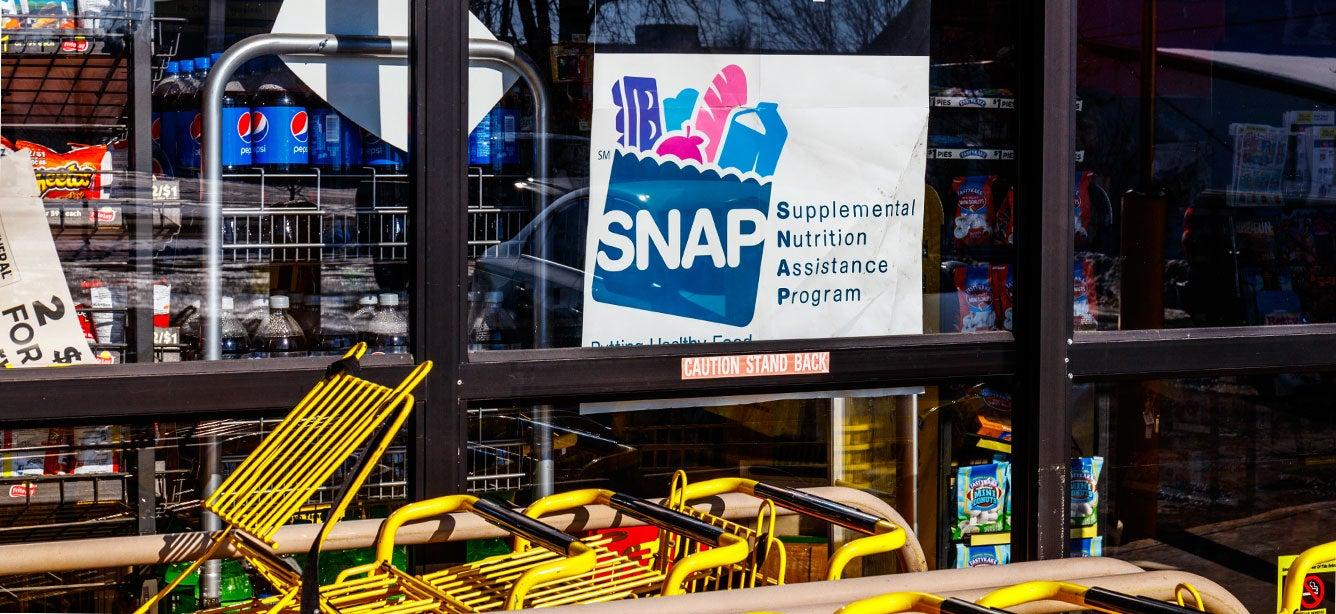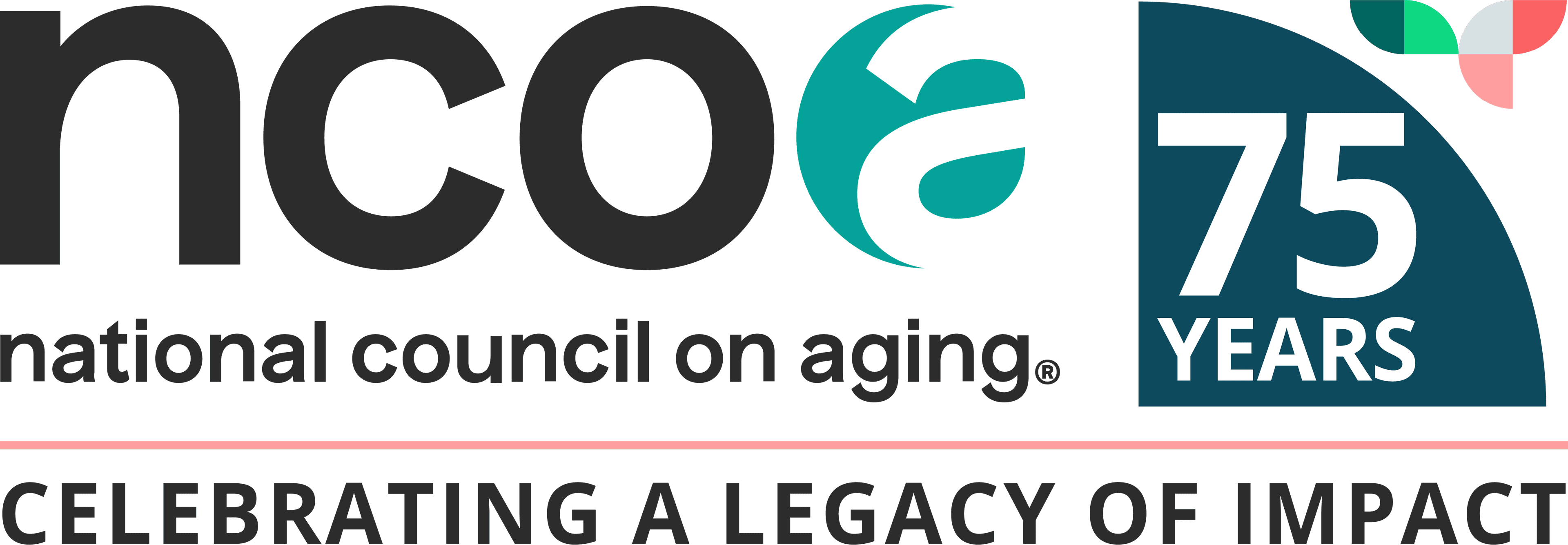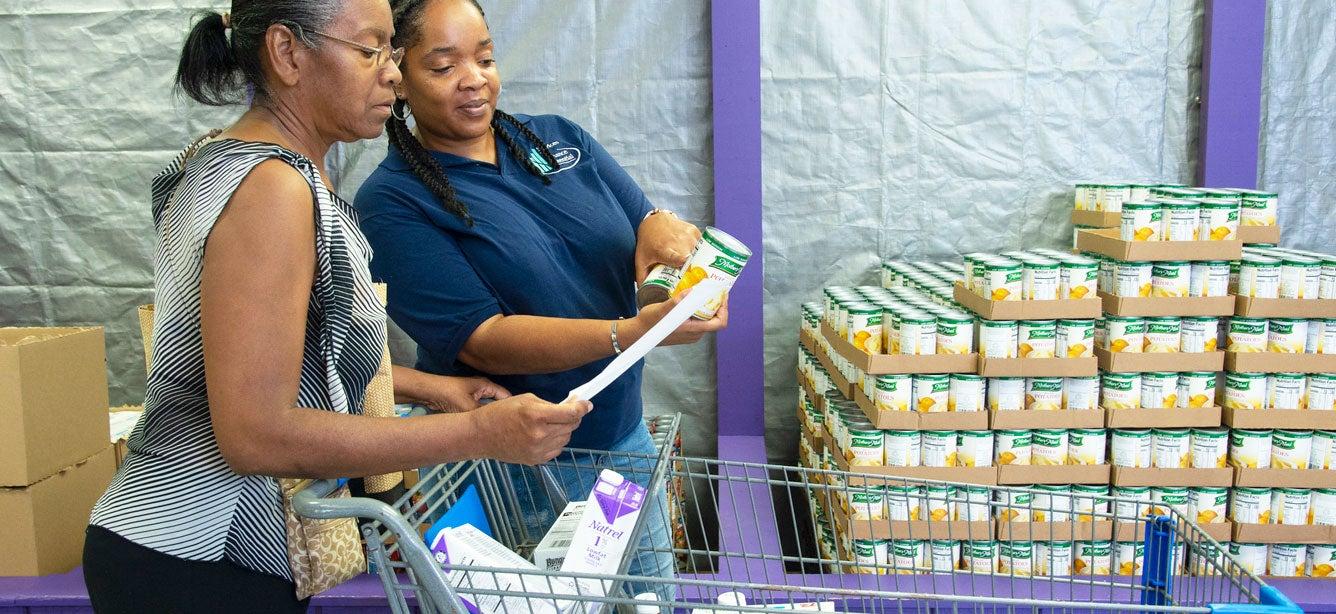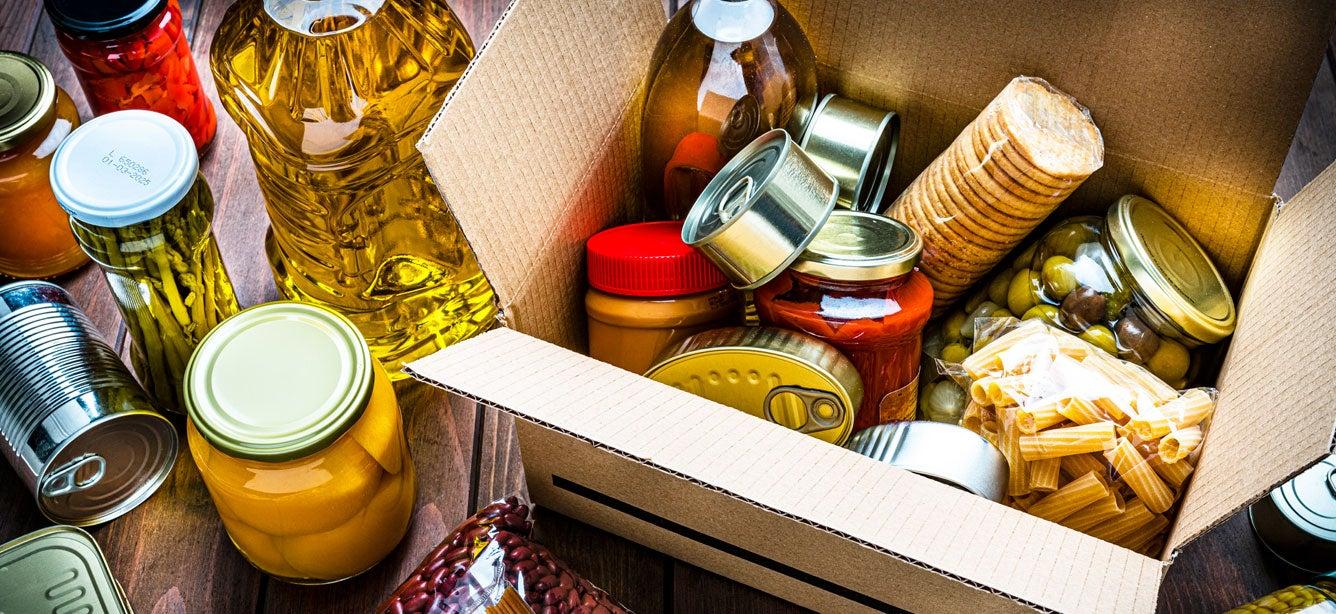
Related Topics
Imagine rationing your meals every day to make sure you have enough food to last the rest of the week. Or delaying refilling your prescription medications to keep money in your bank account for groceries.
These scenarios are a reality for many older Americans. Although food insecurity among older adults has improved since the COVID-19 pandemic, it’s still alarmingly high. In fact, roughly 11% of older adult households in the U.S. were food-insecure in 2022.1 The current government shutdown means benefits like SNAP could be delayed, leaving people unsure about when, or if, they’ll get the food assistance they rely on.
Before the government shutdown, Brenda, 69, faced challenges of her own when her part-time retirement job unexpectedly screeched to a halt. Her monthly Social Security check wasn’t enough to cover her basic living expenses. “After paying rent, utilities, and bills, I often couldn’t buy groceries,” Brenda told a benefits counselor.
Linda faced a similar challenge. After her employer cut back her work hours, the 60-year-old Wisconsin resident said she was “burning up my savings” and constantly worried about how she would put food on the table.
If this sounds familiar for you or someone you care for, know that financial hardship doesn’t have to mean going hungry. With the government shutdown potentially delaying SNAP and other federal benefits, it’s more important than ever to connect with local resources that can help. As both Brenda and Linda discovered, programs and supports are available to make sure older adults don’t have to face these challenges alone.
Food support programs that could help during the government shutdown
1. Food banks
Feeding America operates over 200 food banks and 60,000 food pantries across the United States, each serving a large area. Many food banks adapted the way they served their communities during the COVID pandemic to follow physical distancing guidelines—and many of those changes have stuck, for the simple reason they reduce barriers for shoppers.
Use the food bank locator tool to find one in your community.
2. Other locally tailored options for immediate food help
Many communities offer locally tailored resources to provide immediate help during the government shutdown. The programs and services below can connect you with agencies offering food and other support when federal benefits may be delayed:
- Call your state or local 211 service (or visit 211.org)
- Visit the Eldercare Locator to be connected with a variety of services, including transportation and benefits. Dial 1-800-677-1116 (weekdays, 9 a.m. – 8 p.m. ET)
- BenefitsCheckUp.org can help you find benefits that cover a variety of needs—not just food. Start by entering your ZIP code to learn what financial assistance may be available to you.
What food assistance programs will be impacted by the government shutdown?
1. SNAP
The Supplemental Nutrition Assistance Program (SNAP) helps people afford food at nearly 250,000 participating grocery stores and other retailers across the country.
Due to the current government shutdown, SNAP benefits for November could be delayed or reduced, creating uncertainty for households that rely on this critical support. Even if benefits are eventually issued, the timing of payments may be disrupted, making it especially important for older adults and caregivers to plan ahead and explore local food assistance resources.
Mr. KC, 64 , knows firsthand how SNAP can change lives. He moved out of a nursing home when he contacted one of NCOA’s Benefits Enrollment Centers (BECs). Since Mr. KC no longer had meals regularly provided to him, and had trouble affording groceries on his own, the BEC staff suggested he apply for SNAP benefits. To his surprise and relief, he was approved for the full amount: $280 a month. "I'm so grateful to be able to purchase groceries now without worry," he told a benefits counselor.
2. The Emergency Food Assistance Program (TEFAP)
The Emergency Food Assistance Program (TEFAP) provides food and nutrition help at no cost. If you meet the program guidelines, you can pick up the food from your local food pantries or soup kitchens. Typical offerings vary by location but often include shelf-stable items such as pasta, dried beans, canned fruits and vegetables, and soups.
The current government shutdown is affecting TEFAP by halting new USDA commodity purchases and pausing federal funding for administrative grants. Like Meals on Wheels, previously purchased food is still being delivered. But delays in new orders are expected. Some states may use their own funds to cover distribution costs. Still, the situation could lead to slower deliveries and reduced availability for households that rely on these programs.
Assuming this critical program continues to be funded, you can apply by contacting your state distributing agency to confirm eligibility and find participating sites. They can let you know if you meet the program guidelines and where you can get the food.
3. Senior food boxes
Officially called the Commodity Supplemental Food Program (CSFP), this federal program provides income-eligible older adults with a monthly box of groceries. Combined with other programs like SNAP, CSFP can help food-insecure seniors better stock their fridges and pantries. The USDA authorizes all 50 states, the District of Columbia, Puerto Rico, and several Indian Tribal Organizations (ITOs) to operate the program, though not all participate.
The current government shutdown could affect CSFP in several ways: future food orders may be delayed, existing pantries could run low without replacements, and disruptions to SNAP may increase demand on CSFP and other emergency food programs. One of the biggest impacts is the halt in new funding. Without it, local operations could be limited, directly affecting older adults who rely on these food boxes.
To find out if this program is still running, contact your state distributing agency and ask about the senior food box program in your area.
4. Meals on Wheels
With a network of over 5,000 programs, Meals on Wheels serves nearly every community across the U.S., with volunteers personally delivering nutritious meals to homebound older adults to support their health and social well-being.
Meals on Wheels is just one of the programs that will be significantly affected if the government shutdown continues, as much of its funding comes from federal sources, including the Older Americans Act. A shutdown can delay funding reimbursements, forcing local programs to halt or scale back services, increase waitlists, or even close temporarily. At the same time, previously purchased food is still being delivered, but delays in new orders and higher demand at food banks may further strain local programs as other nutrition assistance programs also experience disruptions.
Meals on Wheels is perhaps the most widely recognized name in home-delivered meals, but it’s not the only one. The Administration for Community Living’s Home-Delivered Nutrition Program, which will likely also be impacted, partners with thousands of organizations nationwide to bring nutritious food right to your doorstep. Assuming funding continues, you can visit the Eldercare Locator to find your local area agency on aging and ask about availability of this program in your area.
4. Group meals
Congregate meal programs provide hot, nutritious meals to older adults in accessible group settings at least once a day. Sites can include senior centers, schools, places of worship, restaurants, and more. Funding comes from a mix of federal grants, like the Older Americans Act, as well as state and local sources.
Most programs offer free or donation-based lunch, and some may also provide breakfast or dinner depending on the location.
Delays or disruptions in federal funding may lead to cuts in services or limit the ability to accept new group meal participants. While many sites may continue operating for a time, the longer a shutdown lasts, the greater the risk that programs will have to scale back or temporarily close. Assuming the government shutdown doesn't delay funding for this criticla program, you can use the Eldercare Locator to find a congregate meal site near you.
NCOA will continue to closely monitor the government shutdown and its impact on programs like SNAP, Meals on Wheels, CSFP, and other vital food assistance services. We are committed to keeping older adults, caregivers, and community partners informed so you can access the resources you need during this uncertain time.
Sources
1. USDA Economic Research Service. Food Security in the U.S.: Key Statistics & Graphics. Found on the internet at https://www.ers.usda.gov/topics/food-nutrition-assistance/food-security-in-the-u-s/key-statistics-graphics/



